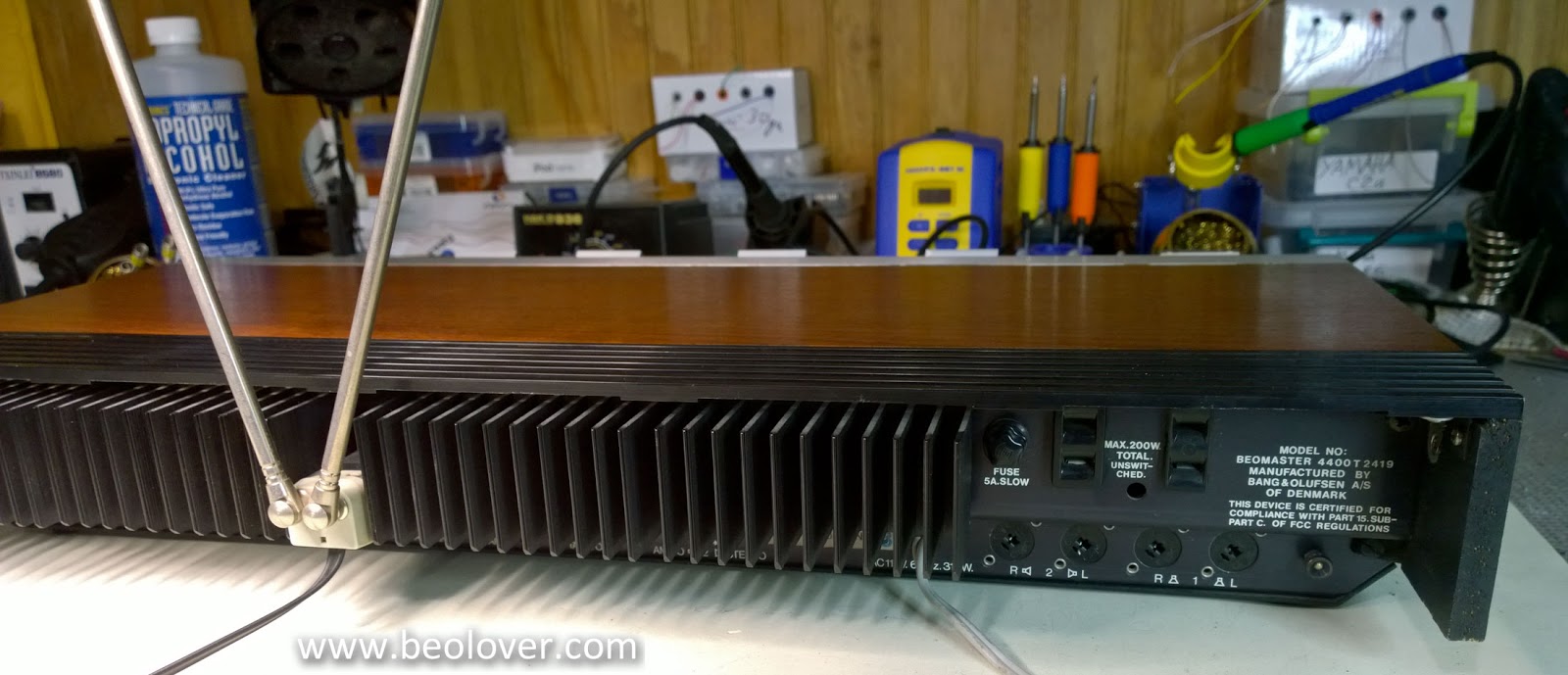Forum Replies Created
-
AuthorPosts
-
Can’t say I remember seeing your problem, but would start by replacing the electrolytic cap in the solenoid circuit and cleaning the contacts under the plastic cover.
Did you tighten the turntable transport screws and remove the platter for your transport. If not its bouncing could have caused issues. The mute switch may have been damaged. Have you tried the tape deck?
You should start by checking the power supply voltages and the electrolytic capacitors.
26 July 2023 at 03:16 in reply to: Beogram 4002 Tonearm Sets Down at End of Platter With No Record #47866It sounds like the End of Travel switch is not engaging early enough. This can be either the adjustment of the plastic optical right angle piece that engages it or the parallelism of it to the threaded rod that the arm moves on. You should also clean its contacts.
19 July 2023 at 17:07 in reply to: Beocord 8002: Did I get the capacitor orientation correct here? #47715I can’t tell from your picture but the correct orientation is marked on the board.
You do not apply oil to the bearing. It needs to be infused in a vacuum. My experience is that they are still the source of your noise.
The motor was considered a single part so B&O did not publish the control-board schematic. What is the nature of the problem you are experiencing. Most of the time its the bearing drying out not an electronic issue.
That may be an old Soundsmith MMC cartridge as they used to make them with gold-tone cases. They are a B&O licensee.
John, great to hear you were successful and the forum proved valuable. Enjoy!
Glad to hear it is now working. Yes, if the arm is at an angle when tracking, that means the shutter is not properly adjusted. Please follow the procedure in the service manual and everything should be fine. If you find you are at the adjustment stop, then the shutter clamp around the base of the arm has been moved and can be mechanically adjusted to give you a new center point.
Specifically changing from foam to rubber will alter the low frequency resonance changing the bass response.
You lift the platter off and place it around the sub-platter and motor pulley.
Troubleshooting FM sections is difficult without the right test equipment. If you’re getting a hum I would first focus on whether all of the power supply voltages are correct before changing any VRs. It really helps to have a signal tracer or at least a scope so you can check the RF section.
Glad you are making progress. That antenna is for AM reception though it will work. B&O supplied dipole wired one or one with two hinged rods for FM like this
Either FM jack is fine as it depends on the type of antenna. If using a dipole wire type you should use the 300 ohm. 75 ohm is for a coax-based external antenna. Regarding your cassette, have you replaced the belts and check the idlers/pulleys for freedom of movement? As to the display, unless you have bad solder joints if those segments never light up then it is likely the LEDs.
Setting the tracking force is a 2-step process adjusting the counterweight for balance and the knob controls the force via a spring. When adjusting the counterweight it can get skewed by binding on one of its support slots. The same bracket has a V-support that the lift solenoid engages governing its cued alignment. Either of these can skew the arm.
Such a device will work for this particular setting assuming your multimeter supports RMS readings to 1K. An alternative would be to use an app on your phone or tablet such as AudioTools that actually provides a cleaner output and offers more functionality.
As a former B&O service tech, I have always used RMS as the AC voltage measurement unless it was annotated as p-p. This is standard across the industry because it is equivalent to a DC measurement for example when computing current draw.
It generally refers to RMS for such adjustments and you can use a multimeter wit RMS support to measure.
Assuming the LED is getting power, I would check that the collector of 1TR17 transitions from 0 to 20v when a black stripe goes by. BTW, the service manual has a troubleshooting flowchart for this specific issue.
-
AuthorPosts


